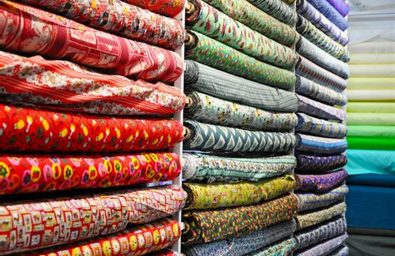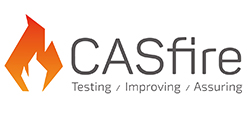
Textile and fabrics are widely used in public places and household interiors, so their flame retardance properties are increasingly attracting public attention.
Textile and fabrics with good flame retardance properties can greatly reduce the incidence of fire. When fire occurs, the flame retardance properties of textile and fabrics can also play a key role. they will not be burn quickly but inflaming retarding when fire occurs.
Fire Testing to
Textile & Fabric
American Standards:
- NFPA 701:Standard Methods of Fire Tests for Flame propagation of textiles and films
- 16 CFR 1630:SURFACE FLAMMABILITY OF CARPETS AND RUGS
- 16 CFR 1631:SURFACE FLAMMABILITY OF Small CARPETS AND RUGS
- 16CFR 1615:standard for the flammability of children’s sleepwear
- 16 CFR Part 1610::Standard for the Flammability of Clothing Textiles
- CPAI 84:Flame-Resistant Materials Used Camping Tentage
- CPAI 75:Test Method for Flammability of sleeping bags
- NFPA 2112:Standard on Flame-Resistant Garments for Protection of Industrial Personnel Against Flash Fire
- ASTM D6413:Standard test method for flame resistance of textiles(vertical test)
- ASTM D 4151:Standard test method for flammability of blankets
- ASTM D1230:Standard Test Method for Flammability of Apparel Textiles
ISO Standards:
- ISO 12952-1:Textiles — Assessment of the ignitability of bedding items —Part 1:Ignition source: smouldering cigarette
- ISO 12952-2:Textiles — Assessment of the ignitability of bedding items —Part 2: Ignition source: match-flame equivalent
- ISO 6941: Textiles Fabric– Burning behavior – measurement of flame spread properties of vertically oriented specimens
- ISO 6925:Burning behaviour of carpets-Tablet test at ambient temperature
- ISO 15025:Protective clothing — Protection against heat and flame — Method of test for limited flame spread
European Standards:
- EN13772:Determination of the curtain, curtain Textiles – burning rate
- EN 13773:Textiles and textile products-Burning behaviour-Curtains and drapes-Classification scheme
- EN 1869:Fire blankets
- EN ISO 14116:Protective clothing – Protection against heat and flame – Limited flame spread materials, material assemblies and clothing
- EN ISO 11611:Protective clothing for use in welding and allied processes
- EN ISO 11612:Protective clothing— Clothing to protect against heat and flame
- EN 71-2:Safety of toys—Part 2: Flammability
- EN 1103:Textiles — Fabrics for apparel — Detailed procedure to determine the burning behaviour
Canadian Standards:
- CAN/ULC-S109:Flame tests of flame-resistant fabrics and films
- CAN/CGSB-4.2 NO.78.1: :Evaluation methods for textiles evidence of thermal protection garment of clothing mateiaux
- CAN/CGSB-4.2 NO.27.7:Textile test methods Combustion resistance of mattresses —Cigarette test
- CAN/CGSB-4.2 NO.27.10:Textile test methods – Flame resistance- Vertically oriented textile fabric or fabric assembly test
- CAN/CGSB-4.2 No. 27.5:TEXTILE TEST METHODS Flame Resistance — 45º Angle Test — One-Second Flame Impingement
- CAN/CGSB-4.2 NO.27.1:Textile test method Flame resistance — Vertical burning test
- CAN/CGSB-4.2 N° 27.4:Textiles – Burning behavior- Determining ignitability of vertically oriented specimens
British Standards:
- BS 5852 :Furniture & Furnishings (Fire) (Safety) Regulations
- BS 7175:Ignitability of bedcovers and pillows by smouldering and flaming ignition sources
- BS 5867-2:Specification for Fabrics for curtains and drapes – Flammability requirements
- BS 5866-4:Blankets suitable for use in the public sector. Part 4: Specification for flammability performance
- BS 4790:Method for determination of the effects of a small source of ignition on textile floor coverings (hot metal nut method)
- BS EN 14878:Textiles. Burning behaviour of children’s nightwear. Specification
- BS EN 1101:Textiles and textile products. Burning behaviour. Curtains and drapes. Detailed procedure to determine the ignitability of vertically oriented specimens (small flame)
- BS 7837:Specification for Flammability performance for textiles used in the construction of marquees and similar textile structures
- BS 7157:Method of test for ignitability of fabrics used in the construction of large tented structures
- BS 6526:Domestic oven gloves-Requirements and test methods
- BS 6341:Specification for Fabrics for camping tents
- BS 6307:Method for Determination of the effects of a small source of ignition on textile floor coverings
- BS 5815-3:Sheets, sheeting, pillowslips, towels, napkins, counterpanes and continental quilt secondary covers suitable for use in the public sector- Part 3: Specification for counterpanes and continental quilt secondary covers including flammability performance
- BS 5576:Specificaiton for fire safety features of camping tents, awnings, trailer tents and caravan awnings
- BS 5438:Methods for Flammability of vertically oriented textile fabrics and fabric assemblies subjected to a small igniting flame
Chinese Standards:
- GB/T 5455 :Textiles-Burning behavior – Oxygen Index
- GB/T 5455 :Textiles-Burning behavior – Vertical method
- GB/T 20390.1:Textiles-Burning behavior of bedding items-Part 1: Test methods for the ignitability by a cigarette
- GB/T 20390.2:Textiles-Burning behavior of bedding items-Part 2: Test methods for the ignitability by a s smouldering mall open flame
- GB/T 14768 :Carpets burning behavior-Test method at 45° and assessment
- GB/T 14645:Textile fabrics-Burning behaviour-the 45 test determination of damaged area and ignition times
- GB/T 11049:Burning behaviour of carpets-Tablet test at ambient temperature
- GB 8965:flame retardant protective clothing
Australian Standards:
- AS/NZS 3504:Fire blankets
- AS 2755.1:Determination of ease of ignition of vertically oriented specimens
- AS 2755.2:Measurement of flame spread properties of vertically oriented specimens
- AS 2755.3:textile fabrics-determination of burning behaviour-determination of surface burning time
